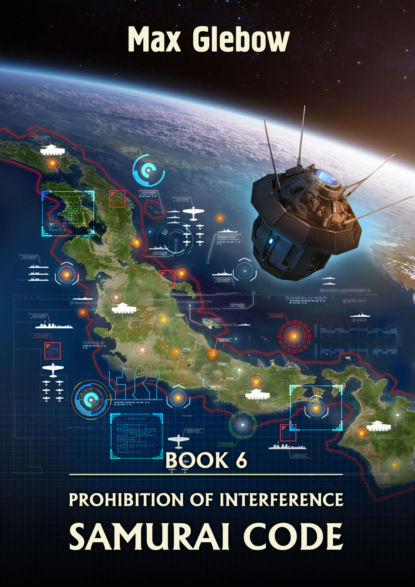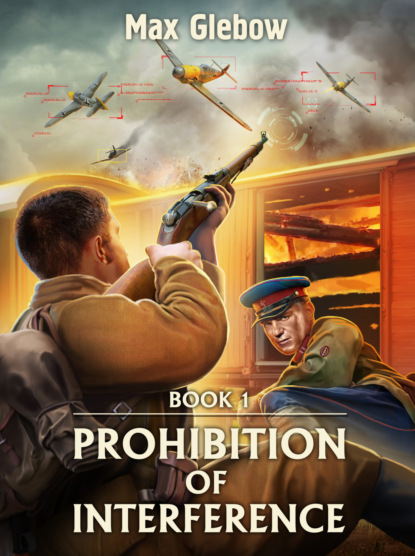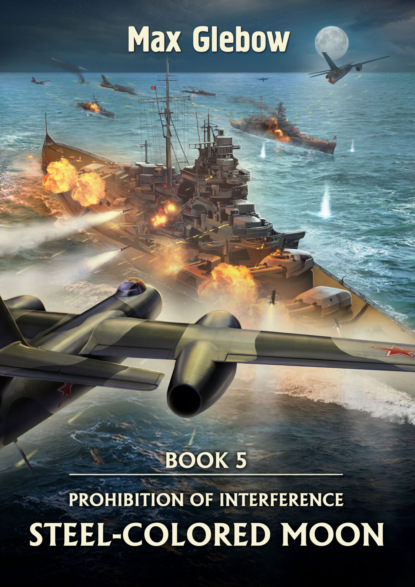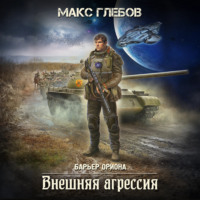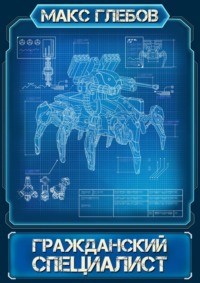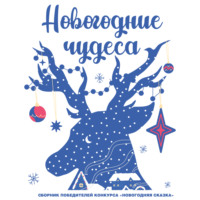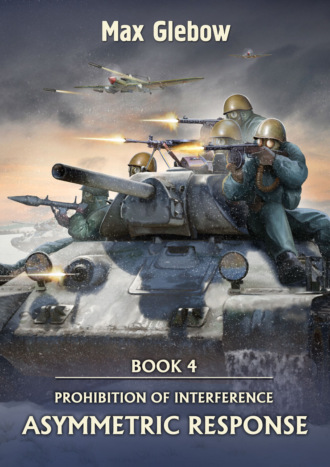
Полная версия
Prohibition of Interference. Book 4. Asymmetric response
“All right,” Shaposhnikov agreed after a little hesitation, “we'll solve this problem. Anything else?”
“Artillery. I need the ability to quickly organize a counter-battery fight when the German heavy howitzers start shelling our battle lines. Ideally, I would like to have a direct link with the artillery regiment of the Reserve of the Supreme High Command, which will work on the coordinates transmitted by me. It would be better to have two regiments.”
“It's doable,” nodded the Marshal, “especially since this scheme has proven itself more than once in real combat. But things are worse with ammunition. Large-caliber high-explosive shells are almost non-existent even in the front-line depots.”
“Comrade Marshal, chemical munitions would be excellent for counter-battery warfare. Mustard gas and lewisite quickly discourage artillerymen from continuing to fire, especially if one high-explosive round in every five or six chemical rounds still lands on their positions.”
“You're not a supporter of the use of poisonous substances, are you, Lieutenant Colonel?" grinned Shaposhnikov.
“I'm not. But I'm not a stubborn idealist. If there's no other way out, we'll use what we have. At least until the asymmetric response is ready.”
Конец ознакомительного фрагмента.
Текст предоставлен ООО «ЛитРес».
Прочитайте эту книгу целиком, купив полную легальную версию на ЛитРес.
Безопасно оплатить книгу можно банковской картой Visa, MasterCard, Maestro, со счета мобильного телефона, с платежного терминала, в салоне МТС или Связной, через PayPal, WebMoney, Яндекс.Деньги, QIWI Кошелек, бонусными картами или другим удобным Вам способом.
Примечания
1
In real history, Germany declared war on the United States on December 11, 1941 – almost immediately after the Japanese attack on Pearl Harbor and the landing of Japanese troops in the Philippines. In the reality of the book the Wehrmacht found itself in a much more difficult situation on the Eastern Front, and Hitler refrained from such a rash move.
2
After Japan's sudden attack on the United States, Roosevelt did ask Stalin for help in fighting the Japanese aggressor. The first conversation between the U.S. president and the Soviet ambassador took place in Washington the day after the Japanese struck at Pearl Harbor. Roosevelt wanted the USSR to allow the U.S. to conduct air strikes against the Japanese metropolis from Soviet territory. However, this would have meant a violation of the neutrality pact signed in April 1941 between the Soviet Union and Japan and would inevitably have led to a state of war between the USSR and Japan. Stalin was forced to refuse Roosevelt, citing the aforementioned pact and the fact that the USSR was currently engaged in a heavy war with Germany, which required the concentration of all forces and means. Having received a negative answer, Roosevelt told the Soviet ambassador that he regretted such a decision, but if he were the Soviet leader, he would have done the same.
3
In real history, during the Tikhvin strategic offensive operation, which lasted until the end of December 1941, the Red Army failed to take Kirishi. The Kirishi bridgehead on the eastern bank of the Volkhov River was held by the Germans for almost two years, and it was a serious threat to the Red Army because of the possibility of renewed German offensive towards the Svir to join the Finnish troops.
4
In real history, Rostov-on-Don was also liberated by the Red Army during the Rostov offensive, held from November 17 to December 2, 1941, but Soviet troops were not able to take Taganrog, although such a task was put before the advancing armies. As a result, Taganrog was liberated only in August 1943 after two years of occupation.
5
Kerch-Feodosiya landing operation in real history began on December 26, 1941. The German infantry division and the Romanian regiment defending the Kerch Peninsula were able to avoid encirclement and retreat in an organized manner. Despite a successful start, the Soviet troops that landed subsequently suffered a heavy defeat. The Red Army suffered heavy losses and was forced to abandon the Kerch Peninsula again. The remnants of the Crimean Front (10–13 thousand soldiers) retreated to the Adzhimushkay quarries, where they continued to resist until the end of October 1942. In the reality of this book the landing at Kerch and Feodosia was two weeks earlier due to the more favorable situation, which arose due to the encirclement of Army Group Center near Moscow and the weakening of the Wehrmacht grouping in the Crimea because of the redeployment of German forces to supplement Kleist's Panzer Group.




